Extreme temperature and out-of-hospital-cardiac-arrest. Nationwide study in a hot climate country
- PMID: 33820550
- PMCID: PMC8022396
- DOI: 10.1186/s12940-021-00722-1
Extreme temperature and out-of-hospital-cardiac-arrest. Nationwide study in a hot climate country
Abstract
Background: Out-of-hospital-cardiac arrest (OHCA) is frequently linked to environmental exposures. Climate change and global warming phenomenon have been found related to cardiovascular morbidity, however there is no agreement on their impact on OHCA occurrence. In this nationwide analysis, we aimed to assess the incidence of the OHCA events attended by emergency medical services (EMS), in relation to meteorological conditions: temperature, humidity, heat index and solar radiation.
Methods: We analyzed all adult cases of OHCA in Israel attended by EMS during 2016-2017. In the case-crossover design, we compared ambient exposure within 72 h prior to the OHCA event with exposure prior to the four control times using conditional logistic regression in a lag-distributed non-linear model.
Results: There were 12,401 OHCA cases (68.3% were pronounced dead-on-scene). The patients were on average 75.5 ± 16.2 years old and 55.8% of them were males. Exposure to 90th and 10th percentile of temperature adjusted to humidity were positively associated with the OHCA with borderline significance (Odds Ratio (OR) =1.20, 95%CI 0.97; 1.49 and OR 1.16, 95%CI 0.95; 1.41, respectively). Relative humidity below the 10th percentile was a risk factor for OHCA, independent of temperature, with borderline significance (OR = 1.16, 95%CI 0.96; 1.38). Analysis stratified by seasons revealed an adverse effect of exposure to 90th percentile of temperature when estimated in summer (OR = 3.34, 95%CI 1.90; 3.5.86) and exposure to temperatures below 10th percentile in winter (OR = 1.75, 95%CI 1.23; 2.49). Low temperatures during a warm season and high temperatures during a cold season had a protective effect on OHCA. The heat index followed a similar pattern, where an adverse effect was demonstrated for extreme levels of exposure.
Conclusions: Evolving climate conditions characterized by excessive heat and low humidity represent risk factors for OHCA. As these conditions are easily avoided, by air conditioning and behavioral restrictions, necessary prevention measures are warranted.
Keywords: Climate change; Humidity; Meteorology; OHCA; Solar radiation; Temperature.
Conflict of interest statement
The authors declare that they have no competing interests
Figures
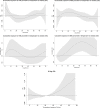
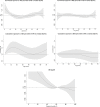
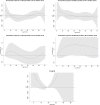
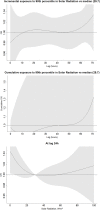
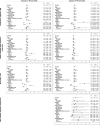
Similar articles
-
Short-term exposure to ambient fine particulate matter and out-of-hospital cardiac arrest: a nationwide case-crossover study in Japan.Lancet Planet Health. 2020 Jan;4(1):e15-e23. doi: 10.1016/S2542-5196(19)30262-1. Lancet Planet Health. 2020. PMID: 31999950
-
Effect of meteorological factors and air pollutants on out-of-hospital cardiac arrests: a time series analysis.Heart. 2020 Aug;106(16):1218-1227. doi: 10.1136/heartjnl-2019-316452. Epub 2020 Apr 27. Heart. 2020. PMID: 32341139
-
The association between ambient temperature and out-of-hospital cardiac arrest in Guangzhou, China.Sci Total Environ. 2016 Dec 1;572:114-118. doi: 10.1016/j.scitotenv.2016.07.205. Epub 2016 Aug 3. Sci Total Environ. 2016. PMID: 27497032
-
Extreme Heat and Cardiovascular Health: What a Cardiovascular Health Professional Should Know.Can J Cardiol. 2021 Nov;37(11):1828-1836. doi: 10.1016/j.cjca.2021.08.008. Epub 2021 Nov 18. Can J Cardiol. 2021. PMID: 34802857 Review.
-
Effects of ambient temperature on the incidence of myocardial infarction.Heart. 2009 Nov;95(21):1760-9. doi: 10.1136/hrt.2009.175000. Epub 2009 Jul 26. Heart. 2009. PMID: 19635724 Review.
Cited by
-
Short-term exposures to temperature and risk of sudden cardiac death in women: A case-crossover analysis in the Nurses' Health Study.Environ Epidemiol. 2024 Jul 8;8(4):e322. doi: 10.1097/EE9.0000000000000322. eCollection 2024 Aug. Environ Epidemiol. 2024. PMID: 38983881 Free PMC article.
-
Air Pollution and Temperature: a Systematic Review of Ubiquitous Environmental Exposures and Sudden Cardiac Death.Curr Environ Health Rep. 2023 Dec;10(4):490-500. doi: 10.1007/s40572-023-00414-7. Epub 2023 Oct 17. Curr Environ Health Rep. 2023. PMID: 37845484 Free PMC article.
-
Heat, heatwaves, and ambulance service use: a systematic review and meta-analysis of epidemiological evidence.Int J Biometeorol. 2023 Oct;67(10):1523-1542. doi: 10.1007/s00484-023-02525-0. Epub 2023 Jul 27. Int J Biometeorol. 2023. PMID: 37495745 Free PMC article.
-
Thermal indices for assessing the impact of outdoor thermal environments on human health: a systematic review of epidemiological studies.Int J Biometeorol. 2025 Aug;69(8):1843-1866. doi: 10.1007/s00484-025-02948-x. Epub 2025 Jun 2. Int J Biometeorol. 2025. PMID: 40455250 Free PMC article. Review.
-
The impact of non-optimum temperatures, heatwaves and cold spells on out-of-hospital cardiac arrest onset in a changing climate in China: a multi-center, time-stratified, case-crossover study.Lancet Reg Health West Pac. 2023 Apr 29;36:100778. doi: 10.1016/j.lanwpc.2023.100778. eCollection 2023 Jul. Lancet Reg Health West Pac. 2023. PMID: 37547045 Free PMC article.
References
-
- Hensel M, Geppert D, Kersten JF, Stuhr M, Lorenz J, Wirtz S, Kerner T. Association between weather-related factors and cardiac arrest of presumed cardiac etiology: a prospective observational study based on out-of-hospital care data. Prehosp Emerg Care. 2018;22(3):345–352. doi: 10.1080/10903127.2017.1381790. - DOI - PubMed
-
- Winther-Jensen M, Christiansen MN, Hassager C, Køber L, Torp-Pedersen C, Hansen SM, Lippert F, Christensen EF, Kjaergaard J, Andersson C. Age-specific trends in incidence and survival of out-of-hospital cardiac arrest from presumed cardiac cause in Denmark 2002-2014. Resuscitation. 2020;152:77–85. doi: 10.1016/j.resuscitation.2020.05.005. - DOI - PubMed
MeSH terms
Associated data
LinkOut - more resources
Full Text Sources
Other Literature Sources
Research Materials

